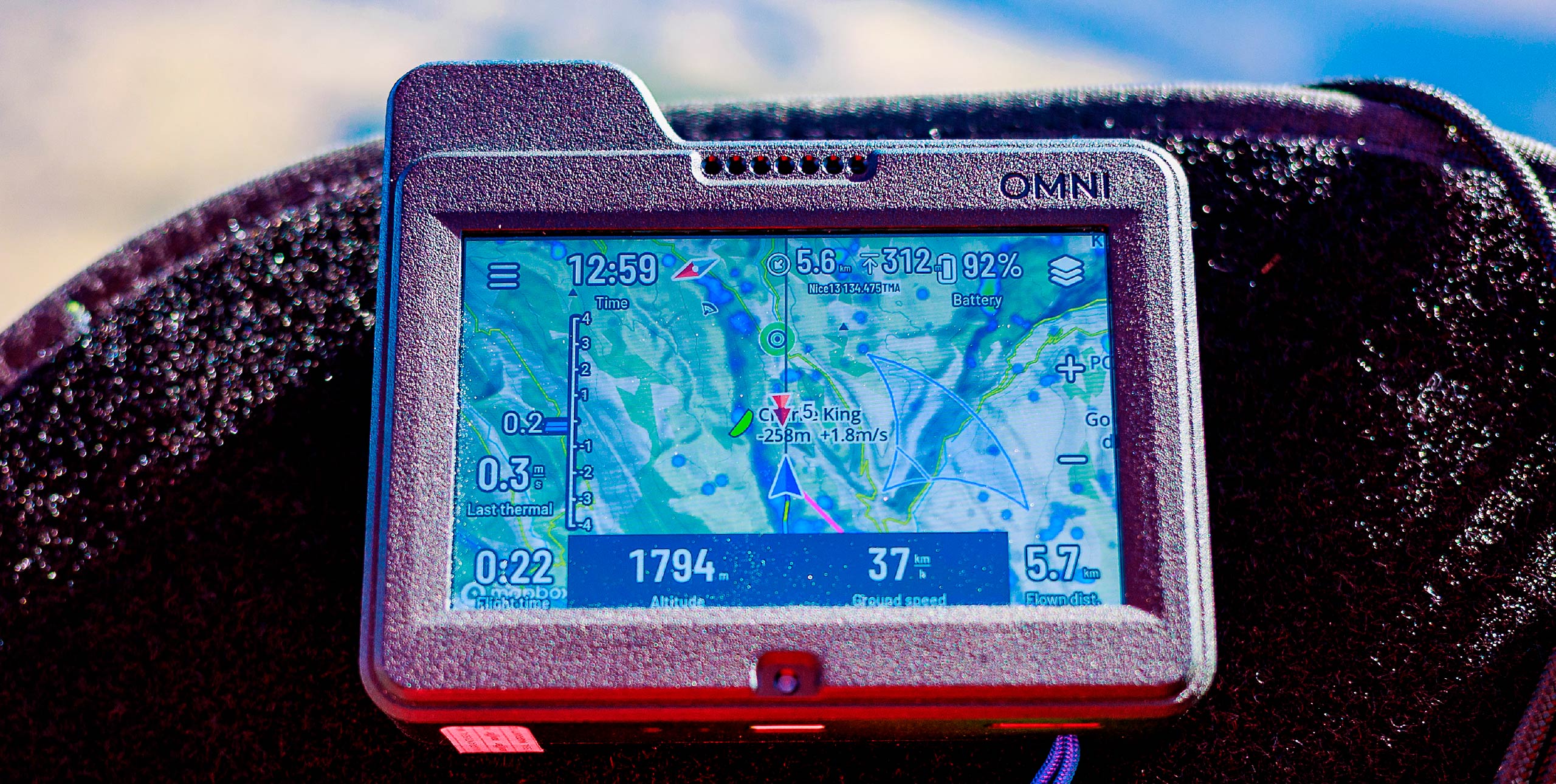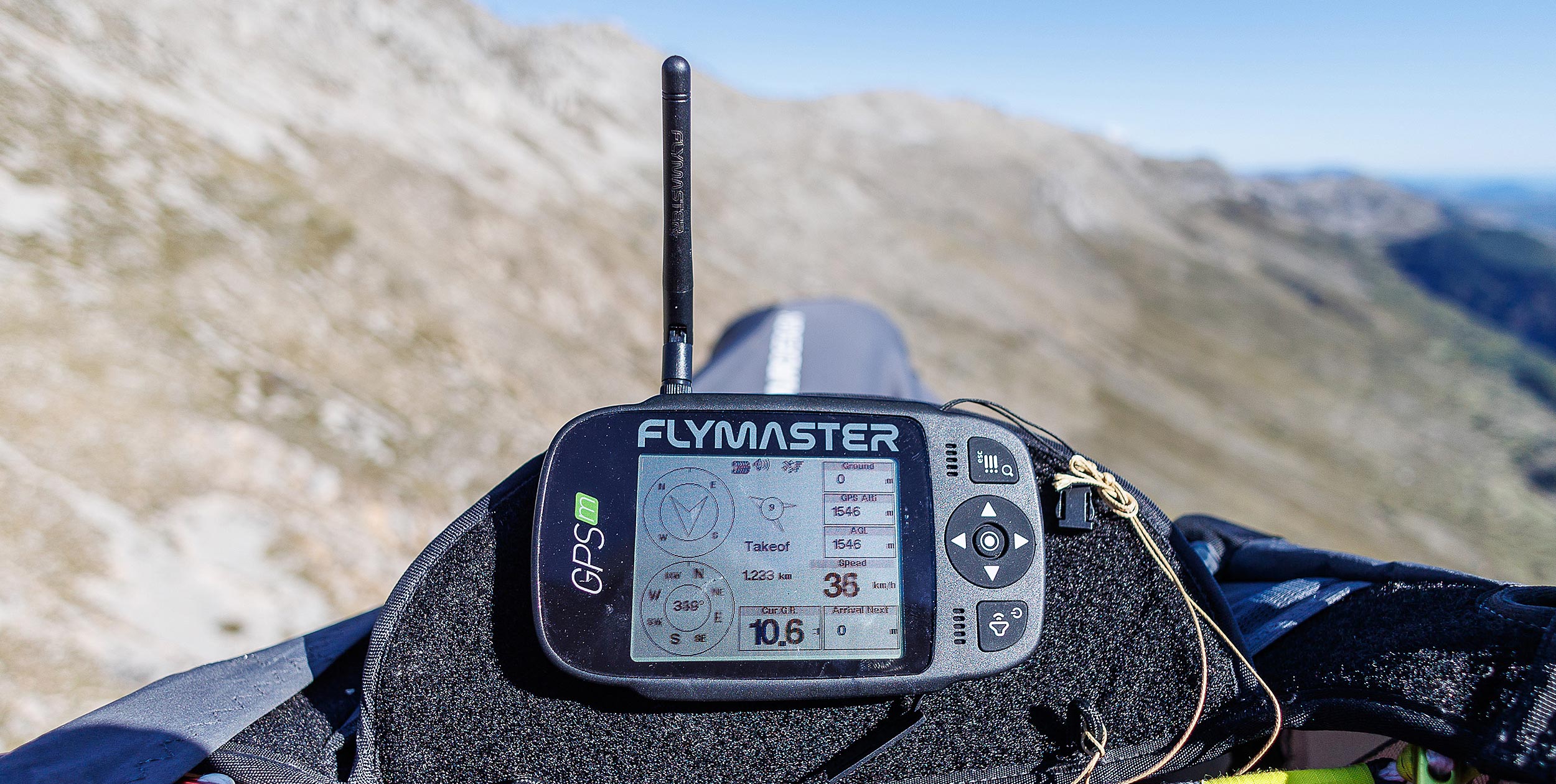
Marcus King tested Flymaster’s GPS M, their non-competition flight instrument with customisable pages and a screen that can be turned on its side.
Flymaster have released two new instruments aimed at non-competition pilots: the GPS M and the Vario M. The Vario M is Flymaster’s new vario-only instrument that adds customisable screens to the entry-level Vario LS. As the name suggests the GPS M adds a GPS to the vario, enabling navigation, airspace and logging of flights.
The M in both cases stands for monochrome; there is a C for colour planned for the future.
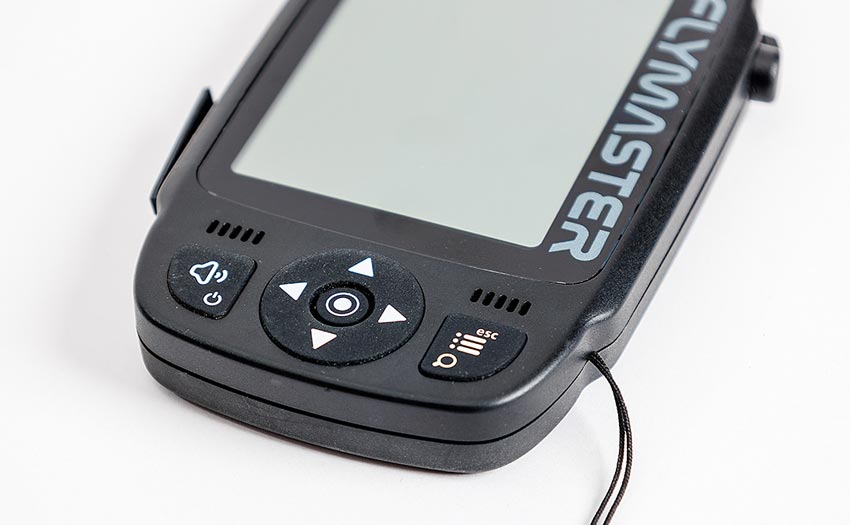
Out of the box
I tested the GPS M. With its similar styling the GPS M is very much a sibling of the full-spec Flymaster Live DS. Flymaster say they have designed it to be more robust than previous instruments and claim it can also be more easily repaired. It certainly feels solid, but at 200g it’s not heavy. An optional rubber bumper case gives extra protection.
At first look there is a large greyscale screen and a series of glove-friendly buttons at the bottom (think Live DS cut in half). The screen is easier to read in sunshine than it is indoors and is better quality than the older instruments in the range.
A major new function is that it can be used in a horizontal position with the screen and button functions adjusting to this format. The font size is also slightly increased, making it easier to read.
The buttons are nice and large with a rubber feel and are easy to use in the air, even with thick gloves. It’s easy to use them to step through the screens or alter the volume in flight.
Customisable pages
Up to eight pages can be fully customisable for both vertical and horizontal views using the free Flymaster Instrument Manager (FIM) software available for Windows and MacOS. This allows you to create the screens and then upload finished layouts.
The default layout is available on the Flymaster website as a starting point for your customisation. You can add various data fields such as altitude, speed, flight duration, plus more graphical elements like the compass rose, wind indicator and maps. A new object is the cross-section view showing the terrain on your glide path and any airspace.
One data field that was missing was an indication of XC distance flown. There is an odometer, but it doesn’t use any league rules for calculating via waypoints etc. Hopefully this can be added in an update. Page triggers can also be set up so pages switch automatically when entering a thermal or when you get close to airspace.
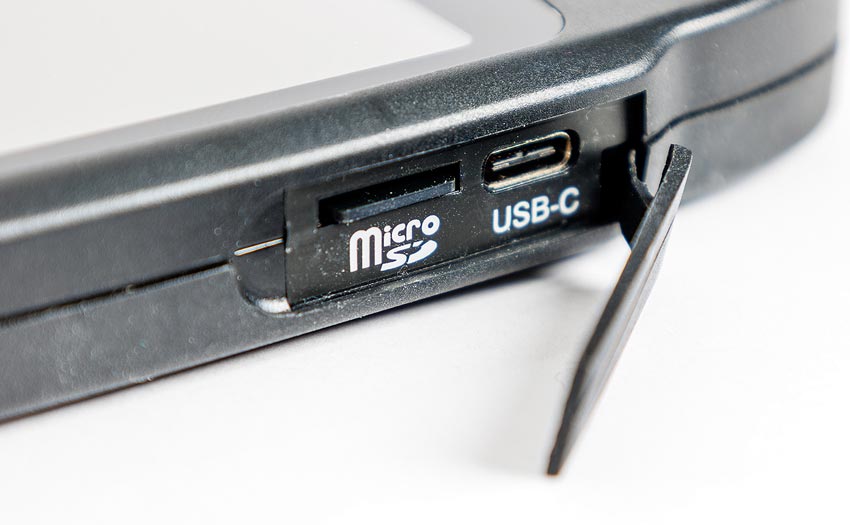
Charging and data exchange
Flymaster now use the new USB-C standard for charging and data exchange. A charger is supplied, which Flymaster recommend you use to keep battery health at its best. Flymaster claim 27 hours’ battery life, and I found this should be achievable. You can definitely do several flights without having to worry about recharging. Charging from a computer is slow, so make sure you use the supplied charger.
The USB-C is also used to get data on and off. The easiest way is to plug it into your computer and use the FIM software. Once set up on LiveTrack360.com a single click will upload new flights to the Flymaster cloud, it can then upload them to the XC league of your choice automatically or you can choose to do this flight-by-flight.
IGC files can also be created internally. I successfully managed to use an Android phone to download an IGC file and upload it to XContest.org. But unless you need to do it in the field the FIM method is simpler.
Sadly there is no Bluetooth or wifi connection, so you can’t drive an app on your phone. It would have been nice to have the GPS M for displaying numerical data in black and white with a simple tablet for navigation, although the maps are pretty good for a greyscale display.
Vario
The GPS M has a vario sound and style that will be familiar to Flymaster users. It’s not exactly the same as older instruments but similar. You can modify the sound with adjustments for base tone, increments and cadence. You can also turn on the instant-vario function which makes use of the built-in accelerometer.
Having used a Flymaster Live a lot in the past I quickly adjusted to the GPS M. It has good sensitivity, making it easy to understand what the air is doing. It’s not a frenetic instrument to use in the air, although even at its loudest it might be a bit quiet for some.
The instrument has the usual wind strength and direction displays which are easy to see at a glance and seem accurate.
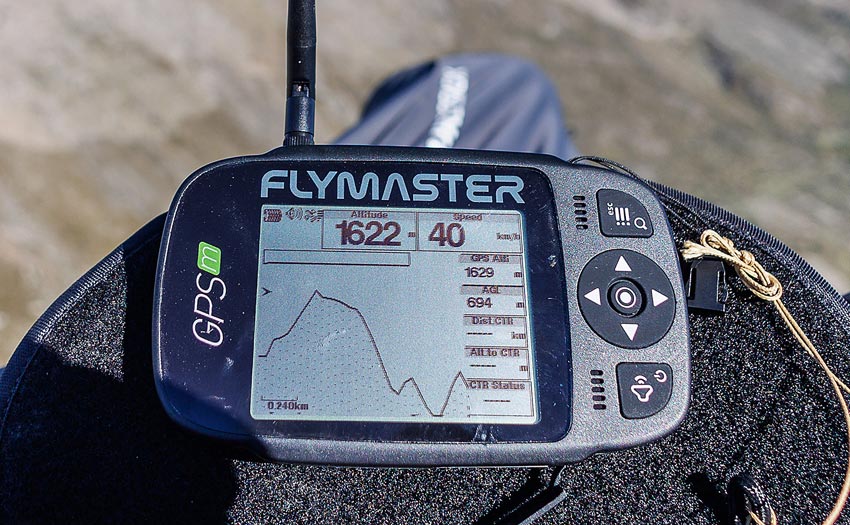
Navigation and airspace
Although not designed for competition you can still add waypoints and create a task, but you won’t find information you need for racing such as start gate, end-of-speed section, or goal.
For XC routes though it’s easy to use loaded waypoints to set up a task. However, you can’t set a goal by clicking on a map: you need to know the latitude and longitude to create a waypoint.
The direction to fly is shown on the compass rose and the route page and will be familiar to anyone who has used a Flymaster before. I find the compass display very clear.
The GPS M comes with an SD card that contains a worldwide database of airspace, and you can upload your own airspace files via the FIM utility. However, there is no automatic updating like you get with some instruments. You can check for nearby airspace and switch off any that aren’t in use.
As you get close to airspace the instrument will sound an alarm and can switch to the airspace page. It would be nice to have a vocal warnings like the DS Live has, which are less stressful than an alarm, but I guess this requires a lot more memory. When you are close to airspace there is a pop-up that allows you to disable it for the rest of the day, which is easy to do with the big buttons.
Flarm and tracking
To avoid being hit by other aircraft Flarm is an optional extra when you buy it. If fitted there is an aerial port on the side of the unit and quite a large folding aerial is supplied. The unit works only as a beacon and cannot receive data from other instruments.
There is no live tracking on this instrument. You can use your Flarm ID via the Open Glider Network to give live tracking when in range of ground stations, but personally I hope Flymaster will offer a version with live tracking and Bluetooth in the future. I always found my Live a great complement to a more graphical instrument.
The verdict
This will be a very good vario for many pilots. It does all the basics you need to fly XC well, including a nicely sensitive vario, easy-to-read screens and easy-to-use buttons.
The new system brings a more graphical feel that is easy to navigate and read in the air. The landscape option makes sense if this is your only instrument, and I’m sure I am not alone in welcoming bigger fonts.
It does lack the connectivity that some other instruments in the same price range have, but the free FIM software is easy to use. The build is rugged and robust so should last the course over the years as you progress in the sport.
In Brief
What Flymaster say: “The ideal instrument for flying non-competition XC flights.”
Use: Soaring and XC
Size: 152 x 90 x 16 mm
Weight: 200g
Battery life: Approx 27 hours (mfr figure)
RRP: €480 (€560 with Flarm)




